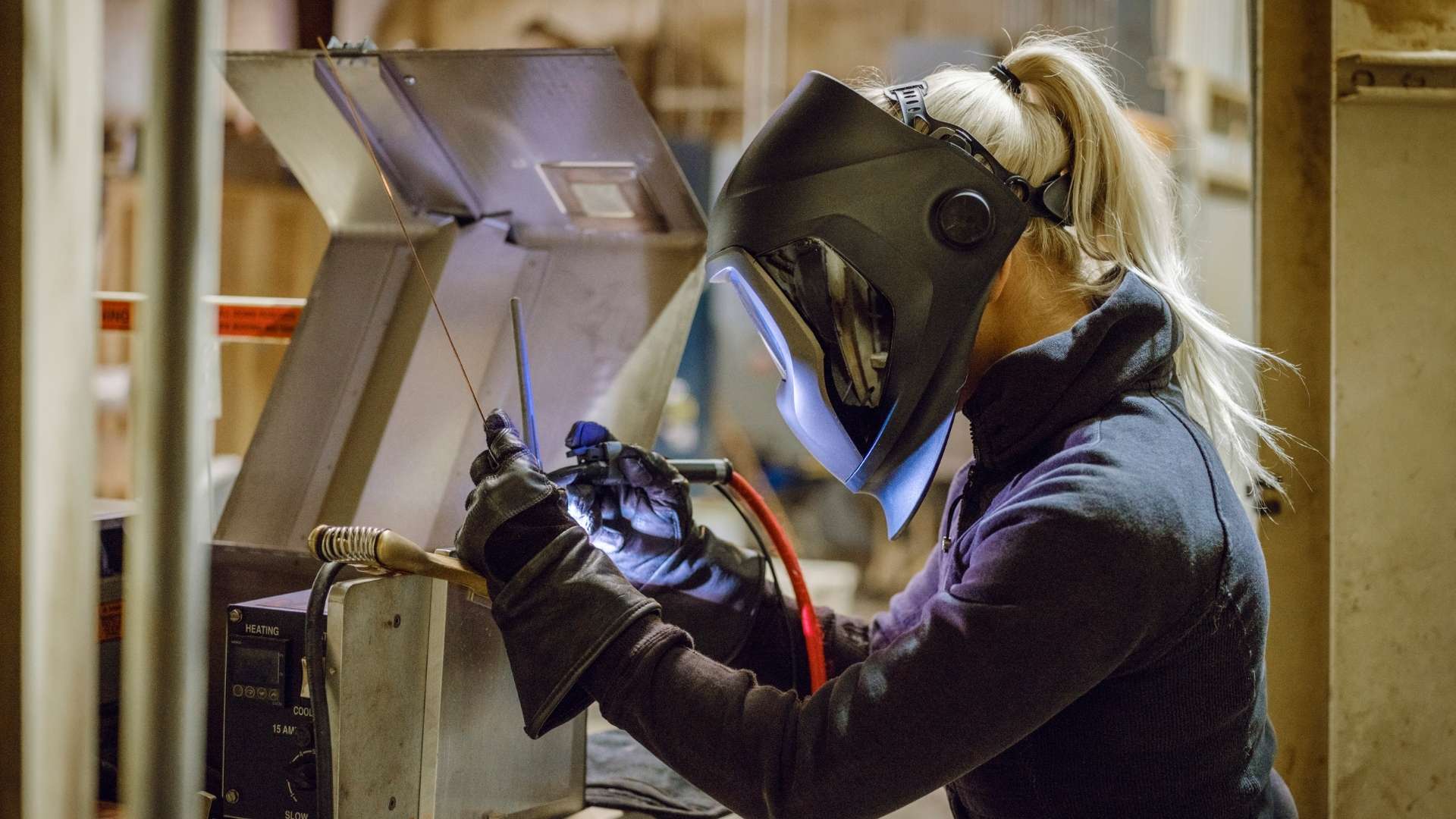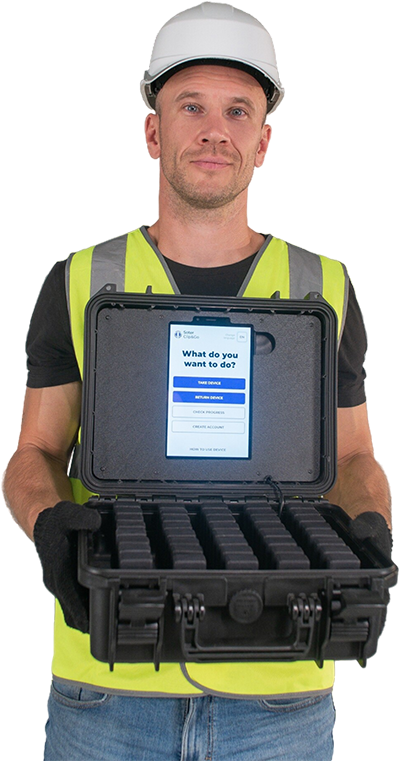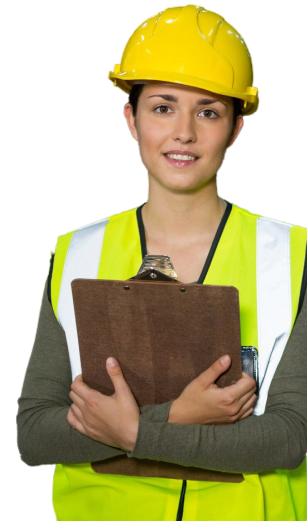Safety Innovations in the Workplace
Safety Innovations in the workplace can be defined as any new and combined intervention, this article will discuss innovation in the field of safety technologies.

Safety Innovations in the workplace can be defined as any new and combined intervention, this article will discuss innovation in the field of safety technologies.
Innovations in safety can range from purely technical advances to simple changes in practice norms. The goal of any implemented innovation is to increase worker safety, wellbeing, and engagement, resulting in enhanced business performance.
Occupational safety and health challenges are a global issue in industrial and service centres. One of the methods for solving these problems is using safety technology as an innovation to protect workers in which a new product is devised, or a service development process is undertaken.
In 2020, the National Safety Council reported that 53% of surveyed safety professionals disclosed using new health and safety software or mobile apps, and 29% reported using wearable technology. The most widely mentioned technologies that companies wanted to pursue were virtual and augmented reality training, artificial intelligence and big data trending, and wearables for fatigue and total worker health.
The safety technology industry is not monopolistic, the choices are endless with research required before deploying to make sure the innovation suits company needs. Choosing the right innovation is imperative so as not to get caught up in gimmicks or shiny object syndrome for it to add value and solve a real problem. It’s important to understand and have clear expectations of limitations, deployment processes, scalability, the quality of any data that might be collected, privacy and any adoption barriers to make sure that it suits safety needs and organization goals.
Here are 10 of the latest safety technology innovations that can assist with improving the safety of workers in industry.
Using Safety Data to Generate Predictive Analysis
With data emerging as the most on point asset, using this to generate predictive analysis is set to increase. Organizations will continue to deploy more machine learning software to move into the preventative space by using predictive analysis. Occupational health and safety professionals will slowly become versed in reading and interpreting data to anticipate potential safety hazards.
Predictive safety modelling is based on collected data and businesses should be certain of the quality of data accumulation with a secure cloud based platform in order to extract and use for any analysis project.Predictive analysis is a powerful lens when it comes to injury risk and analyzing data from individual workers can enact a strong proactive approach to safety. An approach that is usually reactive and procedures put in place only after the injury has occurred. As of 2020, only 12% of companies in industries like manufacturing and construction have adopted technologies that enable predictive analytics, as noted in the National Safety Council survey.
Motion Capture Technology
Motion capture technology uses hardware to record the movement of objects or people. Originating initially from technology used for gait analysis in the life science market and expanding to sport and entertainment before moving onto workplace safety.
Different versions of the vision processing tool can be used, from material safety, detecting flaws in machinery, to worker safety to detect faulty ergonomic postures and facial recognition to ensure safe entry to premises.
Robotics
Industrial robots have been in workplaces for decades. Now in addition to this, professional service robots, collaborative robots (cobots) and mobile autonomous robots are all joining the team to assist not only productivity but safety.
Professional service and collaborative robots are used to operate, or semi operate a task within a commercial environment such as factory cleaning, firefighting, or surgery robots. They can protect workers from harm by minimizing exposure to environmental hazards, such as dust, chemical, extreme temperature and reducing ergonomic hazards by decreasing repetitive tasks.
Drones
Drones or an Unmanned Aerial Vehicle (UAV) are aircraft that are piloted by a ground-based controller. They can be used to monitor areas that are hazardous for humans such as toxic environments, working from heights, and confined spaces.
They transmit instant information removing possibility for human error when collecting safety critical metrics. Drones are a good solution for safety and the startup market for drones is substantial and has continued to develop exponentially.
Smart Sensors
Wearable technology is a general term for all technological devices that are worn on or close to the body. Often known as ‘wearables’, these devices have come a long way since eyeglasses back in the 13th century, from the Sony Walkman in the late 70’s right through to the more recent Apple Watch. Now, due to the likes of fitness trackers such as Fitbit we are becoming far more familiar with using them to aid our health and awareness.
The increasing popularity of wearable tech within workforce health and safety is prevalent. There are several different types of wearables for safety and injury prevention available on the market. Each device has their own unique characteristics and ability to help decrease risk. They range from fall detectors that feature an emergency panic button or pick up any vital sign in the environment, monitoring devices that sense heat or air pollution, step and health tracking devices or for those working at a desk all day, an office posture correction sensor to reduce back pain, there are also trackers that publish the location of remote workers in case of emergencies.
Gamification
Gamification is the application of game-design elements and game principles in non-game contexts. It can also be defined as a set of activities and processes to solve problems by using or applying game-like characteristics. It involves elements of competition, reward, challenge, and social engagement and has been seen to improve the efficacy of engagement efforts without increasing costs.
As safety obligations within organizations become increasingly more about company values rather than a first concern, engaging and empowering individuals with tools to assist and motivate them into a safety mindset and individualizing their responsibility, provides a truly human approach to increase overall safety.
Virtual Reality (VR)
Creating an imaginary world, virtual reality is a computer-generated environment that simulates work practices. With relation to safety, it is becoming common use to immerse workers into situations they may face at work and train them on safe territory. Leveraging what psychologists call ‘embodied cognition’, the worker uses their whole body, tapping into their motor and perceptual systems leading to better memory and knowledge retention.
Although not suited to every training need and with current research suggesting for it to be kept to a short duration, the technology has potential to help workers by increasing their understanding in high-risk work situations.
Augmented Reality (AR)
Enhancing real world or natural environments, augmented reality (AR) offers a perceptually enriched experience by overlaying visual, auditory, or other sensory information. It uses technology to superimpose images, sounds or texts, typically with a mobile phone or tablet.
In safety, AR can be used in many circumstances, such as training, performing maintenance on equipment whereby the AR will alert any potential hazards, connected eyewear can highlight dangerous areas and risk assessments can be conducted in real-time.
EHS Software & Mobile Applications
EHS software and mobile applications provide a variety of risk, safety, auditing, environmental and compliance related functions. They assist with safety practices and procedures and provide quick access to resources.
Some include:
Safety Micro-Learning EHS Audit App
EHS Software
Safety Observation
Job Hazard Analysis
Online Safety Data Sheets
Real-Time Response Management
QR Codes
QR stands for Quick Response and in terms of safety, this is a phrase that fuses well. QR codes are being used for on-the-job training or for instantly reviewing what is required. Safety requirements or system use procedures for a job for the day or for a particular piece of equipment can be quickly scanned and coded with easy to digest information. This can be useful for shift workers, for equipment that is not used very often or simply for constant reminders.
Conclusion
Simultaneously enhancing business performance, wellbeing and engagement, safety technology innovations bring radical change in the worker’s environment.
Technology innovations for safety have grown exponentially in today’s industry 4.0. And now industry 4.0 is complementing the shift into 5.0, which is described as: the state of using modern smart technologies, M2M communication, internet of things (IIot), industrial cyber-physical systems (I-CPS) and the merging of these technologies into the collaboration between human and machine. With this union we are furnished with large possibilities and opportunities to decrease risks by gathering data from the real-world and transmitting it to the virtual world for decision-making.
About Soter Analytics
Soter Analytics is a global safety science company producing AI-supported wearable solutions that reduce the risk of ergonomic injuries in the workplace. Soter wearables are widely used in logistics, manufacturing, healthcare and other industries, helping leading companies to prevent up to 55% of back & shoulder musculoskeletal injuries.
To see how Soter Analytics can help you improve safety behaviour, engage employees to self-manage their training and prevent workplace ergonomic injuries, simply Book a FREE Demo today.


